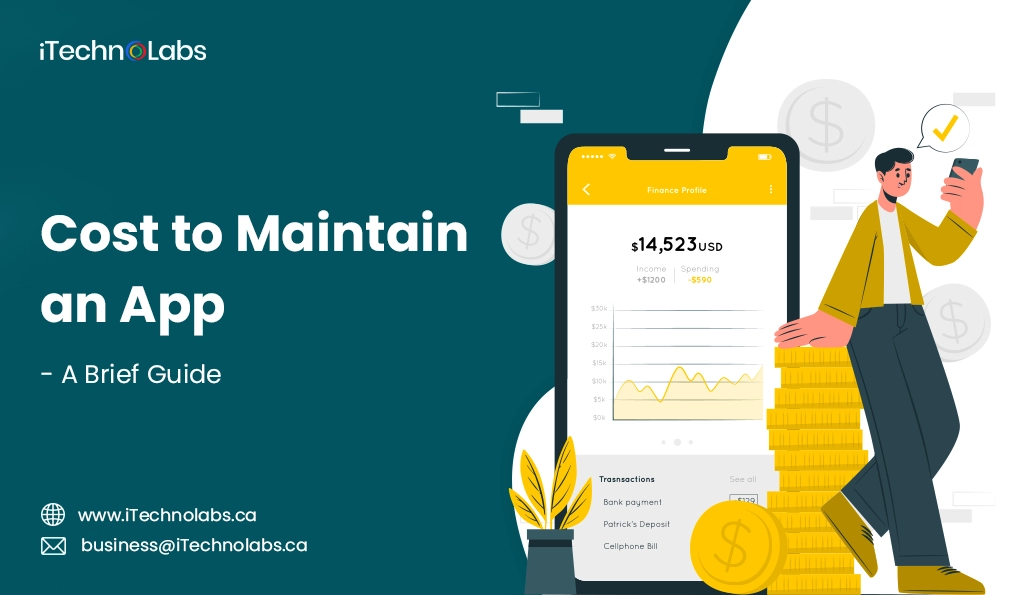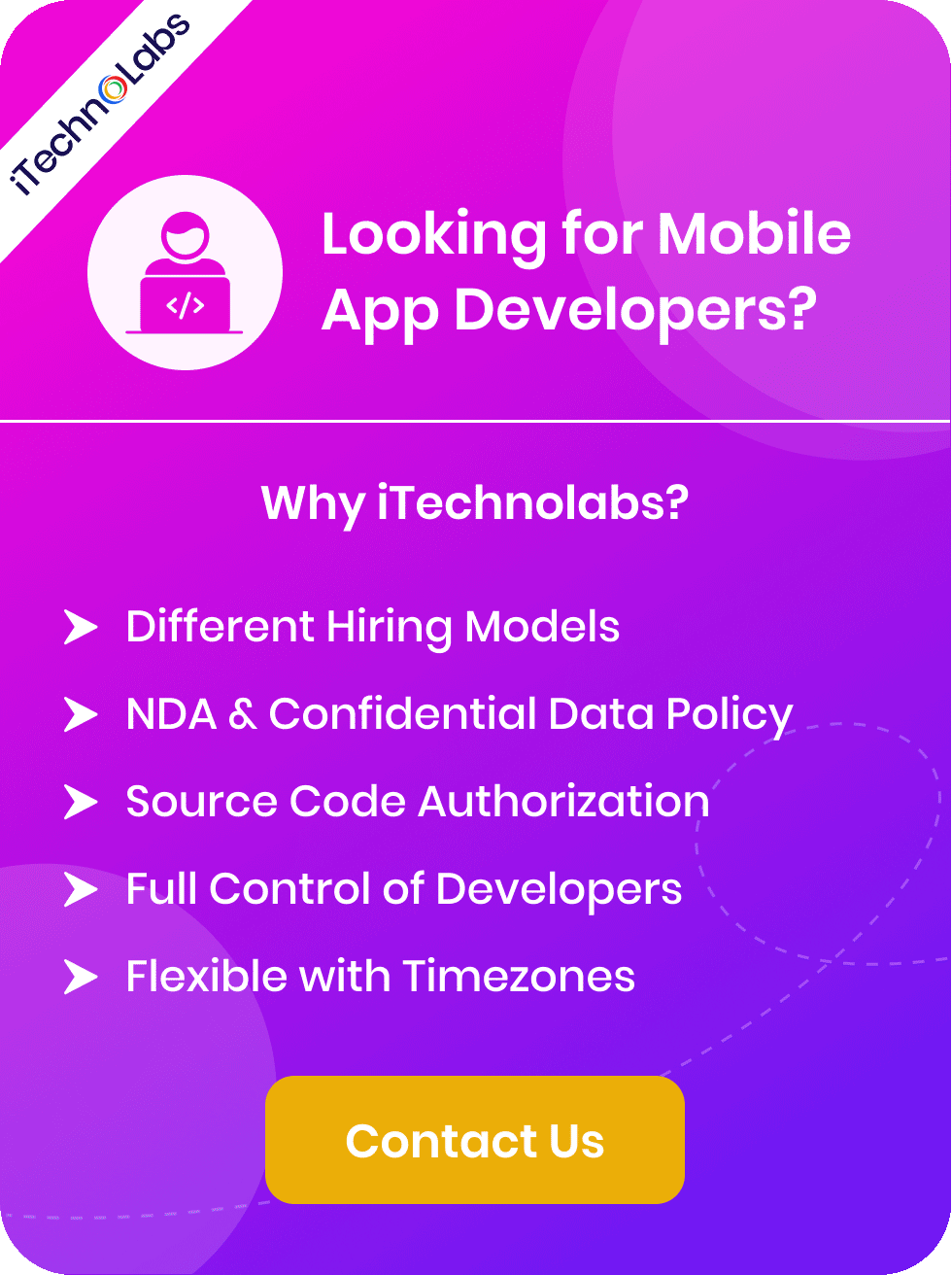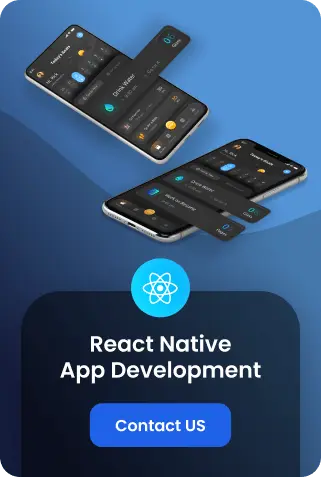In today’s rapidly evolving digital age, mobile applications have become an indispensable and inseparable part of our daily lives. From seamless communication to immersive entertainment, and convenient banking to hassle-free shopping experiences, there seems to be an app available for nearly every aspect of our existence. As a result, forward-thinking businesses have recognized the immense value of developing their own tailor-made applications to not only effectively engage with their customers but also to enhance the overall user experience. However, it’s crucial for businesses to consider the cost to maintain an app, as ongoing maintenance is a significant aspect of ensuring the continued functionality and relevance of the application.
However, it is crucial to understand that creating an app is just the initial step in this ever-evolving journey. Much like any other software, mobile applications demand continuous maintenance and regular updates to ensure their sustained functionality and relevance in the dynamic digital landscape. Neglecting this critical aspect can lead to a myriad of potential issues, such as compromised usability, security vulnerabilities, and, ultimately, the unfortunate loss of valued users. Yet, what many businesses fail to fully contemplate are the substantial financial implications associated with app maintenance.
Therefore, it is essential for businesses to recognize the long-term commitment and investment required to effectively maintain and update their apps. By proactively addressing these considerations, organizations can not only safeguard the integrity of their applications but also optimize their financial resources to ensure a seamless user experience that keeps users coming back for more.
4 reasons why you need post-launch maintenance
1. App marketplaces change guidelines for approval
As the dynamic digital landscape continues to evolve at an astonishing pace, app marketplaces like Apple’s App Store and Google Play Store remain ever-vigilant in updating their guidelines for app approval. These frequent updates necessitate developers to diligently make necessary adjustments to their apps, ensuring strict compliance with the latest guidelines to provide the best user experience possible.
However, this meticulous process can often be time-consuming and may entail additional costs, such as conducting thorough testing and implementing new features that align with the evolving standards. Therefore, it is crucial for developers to stay impeccably informed about the latest updates and industry trends, allowing them to adapt their strategies and development practices accordingly.
By staying ahead of the curve and being proactive in their approach, developers can position themselves for successful app launches and cultivate user satisfaction. This involves not only keeping a keen eye on the ever-changing guidelines but also understanding the evolving needs and preferences of users. By staying attuned to both the technical and user-centric aspects of app development, developers can ensure that their apps meet and exceed user expectations, ultimately leading to increased engagement and success in the highly competitive app market.
2. Bugs occur
Even with rigorous testing and a flawless launch, it is inevitable for bugs to occur post-launch. These glitches can disrupt the user experience and lead to negative feedback, ultimately impacting the app’s ratings and revenue. It is crucial for developers to proactively monitor their apps’ performance and address any bugs that may arise promptly. Failure to do so can result in not only lost financial implications but also damage to the app’s reputation and user trust. It is essential for developers to have a robust bug-fixing process in place and allocate resources towards swift resolution of any issues that may arise.
Moreover, regular updates and maintenance are necessary to keep up with the ever-evolving technological landscape. This requires continuous investments in resources, both financially and in terms of time and effort. However, the financial implications of ongoing maintenance are often overlooked by developers, especially in the race to launch new features and keep up with competitors. With each update, there is a risk of introducing new bugs or compatibility issues that may require additional resources and expenses to address. As such, developers must carefully consider the costs and benefits of continuous maintenance and updates to ensure the financial sustainability of their app.
3. Decided to scale up and add new features
As an app gains popularity and success, the pressure to constantly add new features and updates increases. This is driven by the desire to enhance user engagement and retention, ensuring the app remains relevant and competitive in the market. However, it is important to consider the financial implications that come hand-in-hand with this pursuit of innovation.
The cost of developing new features goes beyond the initial investment of time and resources. It includes the costs associated with testing and quality assurance to ensure a seamless user experience. Additionally, there is the ongoing financial burden of maintaining and updating these features as technology and user expectations evolve.
Developers must carefully assess the cost-benefit ratio of each new feature. This involves considering not only the value it brings to users but also its financial sustainability. Prioritizing features that offer the most value while being economically viable is crucial to maintaining the app’s financial health and long-term success. By striking the right balance between innovation and financial prudence, developers can ensure their app remains competitive in the dynamic app market.
4. Last update date
Another key factor that impacts the financial implications of app maintenance is the frequency of updates. As technology evolves at a rapid pace, users expect frequent updates and improvements to their apps. However, each update comes with its own set of costs.
Regular updates require developers to allocate resources for continuous bug fixes, security patches, and compatibility checks across different devices and operating systems. This can be a significant drain on financial resources, especially for smaller development teams or independent developers.
Moreover, frequent updates can also impact user retention and acquisition. If an app requires frequent updates that take up too much storage space or disrupt the user experience, it may lead to users uninstalling the app altogether. This not only results in lost potential revenue but also creates a negative image for the app.
To mitigate the financial impact of frequent updates, developers must carefully plan and prioritize updates to ensure they are necessary and beneficial for the app. They should also consider alternative methods such as releasing smaller, incremental updates rather than larger, more costly ones.
Also Read: How to Conduct Mobile App Research for Your App Idea in 5 Steps
How often should you update your app?
The ideal frequency of updates ultimately depends on the nature of the app and its target audience. Some apps may require more frequent updates due to their complex features or fast-paced industry, while others may only need occasional updates.
However, a general rule of thumb is to aim for at least one update every three months. This allows for enough time to gather feedback from users and make necessary improvements without overwhelming them with constant updates.
Developers should also consider the potential impact of each update on their financial resources and user retention. Prioritizing updates that address critical issues or add valuable features can help minimize the financial implications of maintenance.
2 types of post-launch support
There are two main types of post-launch support that developers should consider when calculating the financial implications of app maintenance: bug fixing and feature updates.
Bug fixing refers to addressing any technical issues or glitches that arise after an app’s launch. These fixes are necessary to ensure a smooth user experience and maintain the credibility of the app. However, they can also be time-consuming and costly, especially if the bugs are complex.
On the other hand, feature updates involve adding new features or enhancing existing ones to keep up with user demands and industry trends. These updates can attract new users and retain existing ones, but they also require significant financial investments.
When you need new features
The decision to release new features through updates should not be taken lightly, as it can significantly impact the financial stability of an app. Developers must carefully assess the potential return on investment (ROI) of each feature and consider its long-term effects on user retention and revenue.
Some factors to consider when deciding whether a new feature is necessary include:
- User feedback and requests: If a significant number of users are requesting a particular feature, it may be worth investing in its development.
- Industry trends: Keeping up with industry trends can attract new users and keep existing ones engaged. However, developers must consider whether the trend aligns with their app’s purpose and target audience.
- Competitor analysis: Studying the features and updates of competitors can help developers identify potential gaps in their apps and make informed decisions about new features.
What affects the final costs
Type of modifications. The financial implications of app maintenance and updates can vary depending on the type of modifications being made. In general, bug fixes tend to be less costly compared to feature updates. This is because bug fixes typically require less time and resources to implement. However, when it comes to feature updates, the costs can be influenced by factors such as the complexity of the new features, the level of integration required, and the potential impact on user experience. It’s important for app developers to carefully consider the trade-offs between cost and functionality when planning for app maintenance and updates. By doing so, they can ensure that the financial investment aligns with the desired outcomes and user expectations.
The number of hours needed. The time and resources required for app maintenance and updates can significantly impact the final costs. This includes not only the developers’ time but also any additional staff or tools needed to complete the task. For instance, if a developer needs to fix a bug in an older version of an app, they may require additional testing devices or software licenses. Therefore, it’s crucial for app developers to accurately estimate the number of hours needed for maintenance and updates in order to avoid unexpected financial implications.
The number of specialists to get involved. App maintenance and updates may require the involvement of different specialists, such as developers, designers, and quality assurance experts. The more complex the changes are, the higher the chances that multiple specialists will need to be involved. This can lead to increased costs due to the additional resources required for collaboration and coordination between team members. App developers should carefully consider whether it’s necessary to involve multiple specialists and if so, the potential financial implications.
Who to hire for post-release maintenance
When it comes to app maintenance, there are several options for hiring individuals or companies to handle the task. The most common options include in-house developers, freelance developers, and specialized app maintenance companies.
In-house team – When it comes to app maintenance, hiring in-house developers may initially appear as the most cost-effective choice. After all, they are already well-acquainted with the app’s code and structure. However, it’s important to consider the potential long-term costs associated with such a decision. These costs can include not only the salaries and benefits expenses for full-time employees but also the overhead costs of managing an in-house team, such as office space, equipment, and training. By carefully weighing the pros and cons, businesses can make informed decisions about whether to opt for in-house developers or explore other alternatives like outsourcing or hiring freelancers.
New studio or freelancers – The cost of maintaining an app can be considerably reduced by hiring freelance developers or a new studio that specializes in app maintenance. These professionals often have experience with multiple platforms and the skills to handle various types of tasks, making them valuable assets for businesses. Moreover, freelancers are typically paid on a per-project basis, which can be significantly more cost-effective than hiring full-time employees. However, the downside to this option is that businesses may have to deal with communication and coordination issues when working with multiple individuals rather than a single in-house team.
Original team – Another option for app maintenance is to continue working with the original development team. This can be a good option if the team has a deep understanding of the app’s code and structure, making it easier for them to quickly address any issues that may arise. Additionally, with their familiarity of the app, they may also be able to suggest improvements or new features that can enhance its value. However, this option also comes with a higher cost as businesses may need to negotiate an ongoing maintenance contract or pay for each individual task.
Read More: The 3 Different Types of Mobile Apps Explained – A Brief Overview
What is the cost procedure of app maintenance?
The cost procedure of financial implications in-app maintenance varies based on several factors. Typically, businesses can expect to spend around 15%-20% of the original development cost for app maintenance each year. This means, that for an app that originally costs $200,000 to build, the annual maintenance costs could range from $30,000 to $40,000. However, these are just average estimates and the actual costs can be higher or lower depending on the complexity of the app, the number of platforms it supports, and the frequency of updates. In addition, businesses should also consider the costs of unforeseen issues or bugs, which may require additional resources to resolve. These costs can add up, making app maintenance a significant financial consideration for businesses.
The cost procedure of financial implications in-app maintenance involves several key factors:
- Original Development Cost: Typically, the annual app maintenance cost ranges from 15% to 20% of the original development cost. This percentage takes into account various factors such as ongoing support, bug fixes, and general upkeep to ensure the app continues to function smoothly.
- Complexity of the App: Apps with more complex functionalities may require additional resources for maintenance. This includes tasks such as monitoring performance, optimizing code, and addressing compatibility issues. The complexity of the app can have an impact on the time and effort needed for maintenance, which in turn can affect the overall cost.
- Supported Platforms: The number of platforms an app supports can also influence the maintenance cost. Supporting multiple platforms such as iOS, Android, and the Web requires regular updates and testing to ensure compatibility and functionality across different operating systems. This can increase the cost as it involves platform-specific updates, bug fixes, and testing efforts for each supported platform.
- Update Frequency: The frequency of app updates can contribute to the maintenance cost. More frequent updates, whether they are feature enhancements or bug fixes, require additional testing and potential bug fixes. This ongoing maintenance work ensures that the app remains up to date-and meets the evolving needs of users. However, frequent updates can lead to higher costs due to the additional time and resources required for testing and deployment.
- Unforeseen Issues: Despite thorough development and testing, unforeseen issues such as bugs and compatibility problems can arise. These unexpected problems may require extensive troubleshooting and debugging, which can result in additional costs. It is important to allocate a portion of the maintenance budget to address these unforeseen issues and ensure the app’s stability and performance.
- Improvement and New Features: As part of app maintenance, businesses may decide to introduce new features or make significant improvements to enhance user experience or meet evolving market demands. These enhancements can involve additional development work and testing, which can increase the maintenance cost. However, investing in improvements and new features can also lead to increased user satisfaction and business growth in the long run.
Suggested: Cost to Develop eCommerce App for Android & iOS
How can iTechnolabs help you with app maintenance?
iTechnolabs is a renowned and trusted provider of comprehensive services meticulously designed to assist businesses in effectively managing app maintenance. Our dedicated team of highly skilled developers and meticulous testers work diligently and employ cutting-edge technologies to ensure that your app not only remains up-to-date but also maintains optimum functionality, seamless performance, and an exceptional user experience. With our unwavering commitment to detail-oriented solutions and customer satisfaction, you can confidently put your trust in iTechnolabs to deliver top-notch support for all your app maintenance needs, ensuring your app’s success in the competitive digital landscape.
Some ways in which iTechnolabs can assist with managing the financial aspect of app maintenance include:
- By diligently utilizing cost-effective and efficient solutions, we are able to swiftly address bug fixes and compatibility issues, ensuring a seamless and uninterrupted app functionality that users can wholeheartedly rely on.
- Our team is dedicated to tailoring flexible and customizable maintenance packages that perfectly suit your budget and specific needs. With our hassle-free app management services, you can enjoy peace of mind, knowing that your app is in expert hands.
- We take pride in implementing thorough and comprehensive testing and quality assurance processes. By doing so, we minimize the occurrence of unforeseen issues and deliver a flawless user experience that goes above and beyond expectations.
- Leveraging the latest technologies and industry best practices, we optimize your app’s performance to enhance user satisfaction. Additionally, we significantly reduce future maintenance costs, providing long-term benefits and value to your business.
- We believe in closely collaborating with our clients to identify potential areas for improvement or new features. By doing this, we ensure that your business stays ahead of the competition and continues to thrive.
- Through regularly monitoring and analyzing app performance data, we gain valuable insights. These insights enable us to provide data-driven recommendations, assisting you in making informed decisions about future maintenance investments. Ultimately, this guarantees the app’s continuous success and growth.
Are you looking for software development partners?
At iTechnolabs, we recognize that the financial implications of app maintenance can be significant. Our service aims to mitigate these costs through a blend of efficient troubleshooting, thorough testing, and data-driven insights to optimize performance. Our approach not only minimizes the expense and frequency of unexpected app issues but also enhances the app’s overall performance, thereby reducing future maintenance costs.
Not only do we focus on cost-effective solutions, but we also aim for long-term value creation for your business. Our team’s dedication to tailoring maintenance packages that suit your unique budgetary constraints and needs means that we not only provide a service but also a partnership. This partnership allows us to identify potential areas of improvement or new features, ensuring your business stays ahead of the competition. Our regular monitoring and analysis of app performance data provide valuable insights to back your investment decisions for future maintenance, ensuring that your app continues to grow and succeed. Ultimately, iTechnolabs offers financial advantages that are as robust and dynamic as the apps we maintain.
- Cost-Effective Solutions: At iTechnolabs, we understand the importance of budget-friendly app maintenance services. Our goal is to provide affordable solutions that alleviate the financial burden associated with continuous app upkeep, allowing you to focus on other important aspects of your business.
- Value Creation: Our approach goes beyond simply fixing current issues. We strive to add long-term value to your business by identifying potential areas for improvement or new features that can enhance user experience and drive growth. By leveraging our expertise, we help you unlock the full potential of your app and maximize its impact on your target audience.
- Tailored Packages: We believe in catering to your specific needs and budgetary constraints. Our services are fully customizable, allowing us to create tailored packages that align with your unique requirements. Whether you’re a small startup or an established enterprise, we work closely with you to ensure that our solutions fit seamlessly into your financial plans.
- Data-Driven Decisions: In today’s digital landscape, data is key to making informed decisions. With our frequent monitoring and analysis of app performance data, we provide you with valuable insights that enable you to make data-driven decisions about future maintenance investments. This proactive approach ensures that you stay ahead of the curve and continuously optimize your app’s performance.
- Reduced Future Maintenance Costs: Our team of experts excels in efficient troubleshooting, thorough testing, and optimization techniques. By enhancing overall app performance, we not only resolve current issues but also reduce the frequency and cost of future unexpected app issues. This proactive approach saves you time and money in the long run, allowing you to allocate resources more effectively.
- Competitive Advantage: In today’s competitive landscape, staying ahead of the competition is crucial. Our partnership approach helps your business maintain a competitive advantage by ensuring that your app continues to grow and succeed. By constantly monitoring industry trends and evolving technologies, we help you implement the latest advancements to keep your app at the forefront of innovation.
Important: How to Create an App like Shazam? A Ultimate Guide
Conclusion:
In conclusion, it is clear that app maintenance has significant financial implications for businesses. From data-driven decision-making and reduced future maintenance costs to gaining a competitive advantage, investing in regular app maintenance is crucial for long-term success. At iTechnolabs, we work closely with our clients to provide tailored solutions that align with their unique financial plans and help them stay ahead of the competition.








